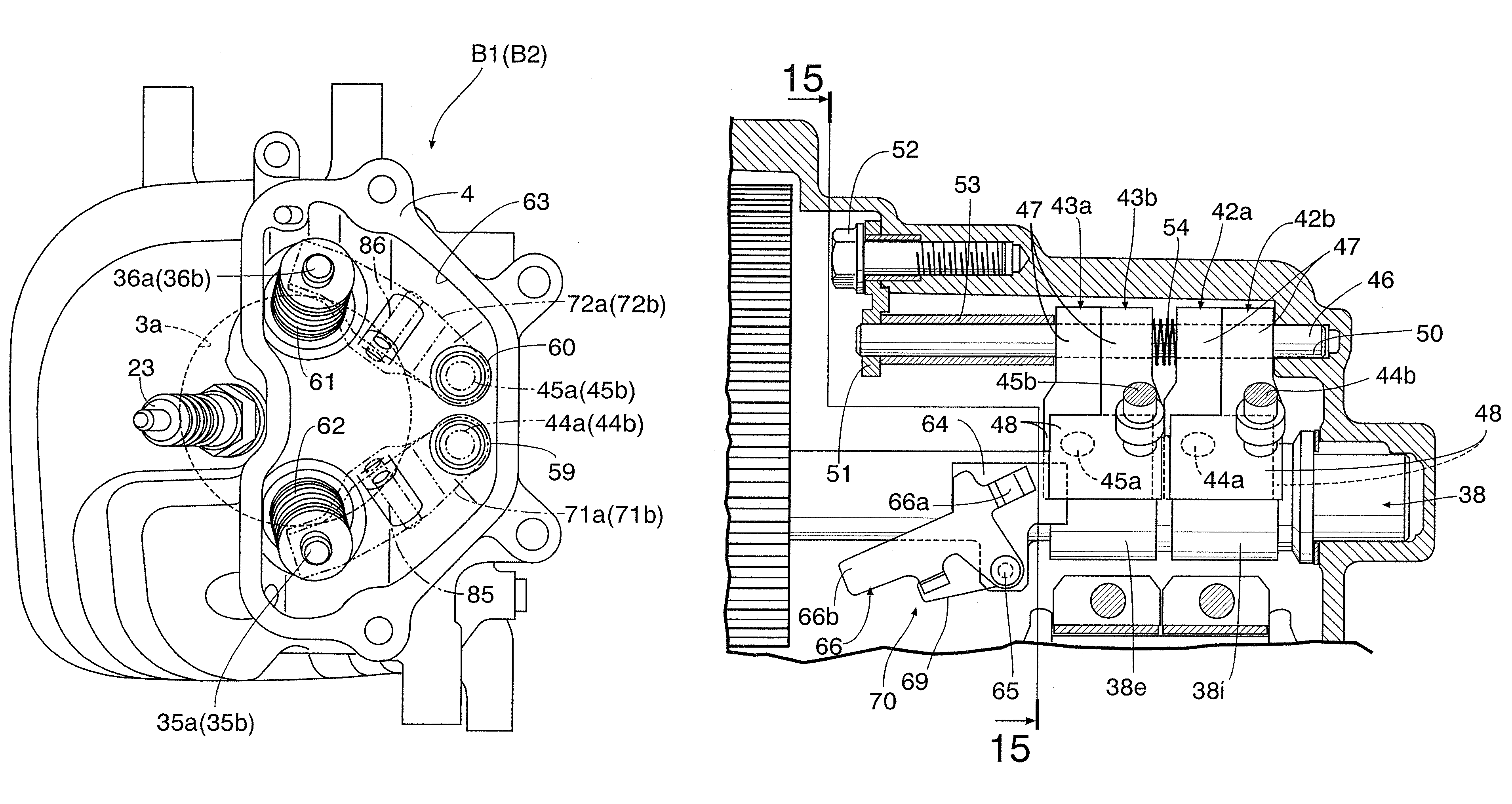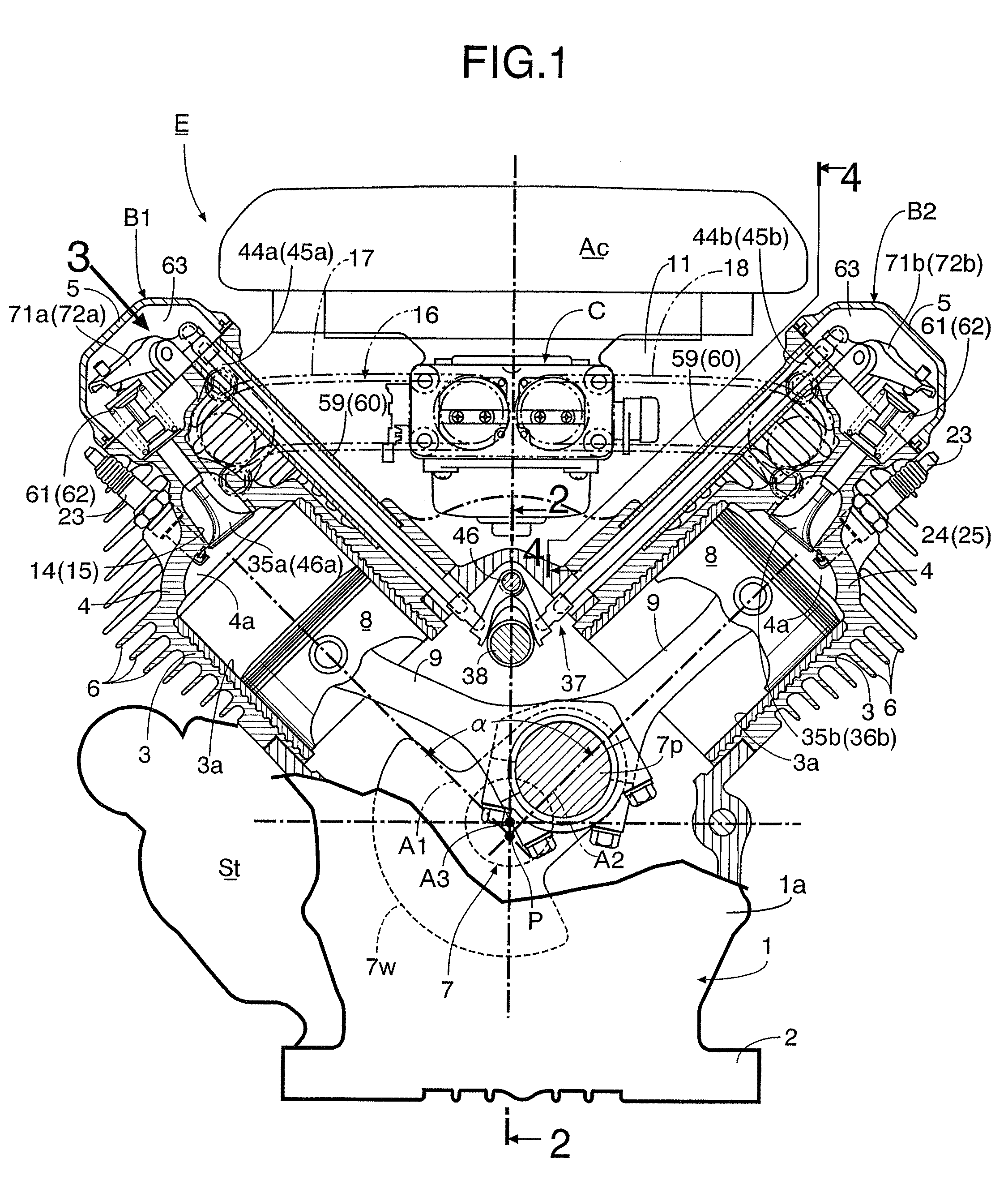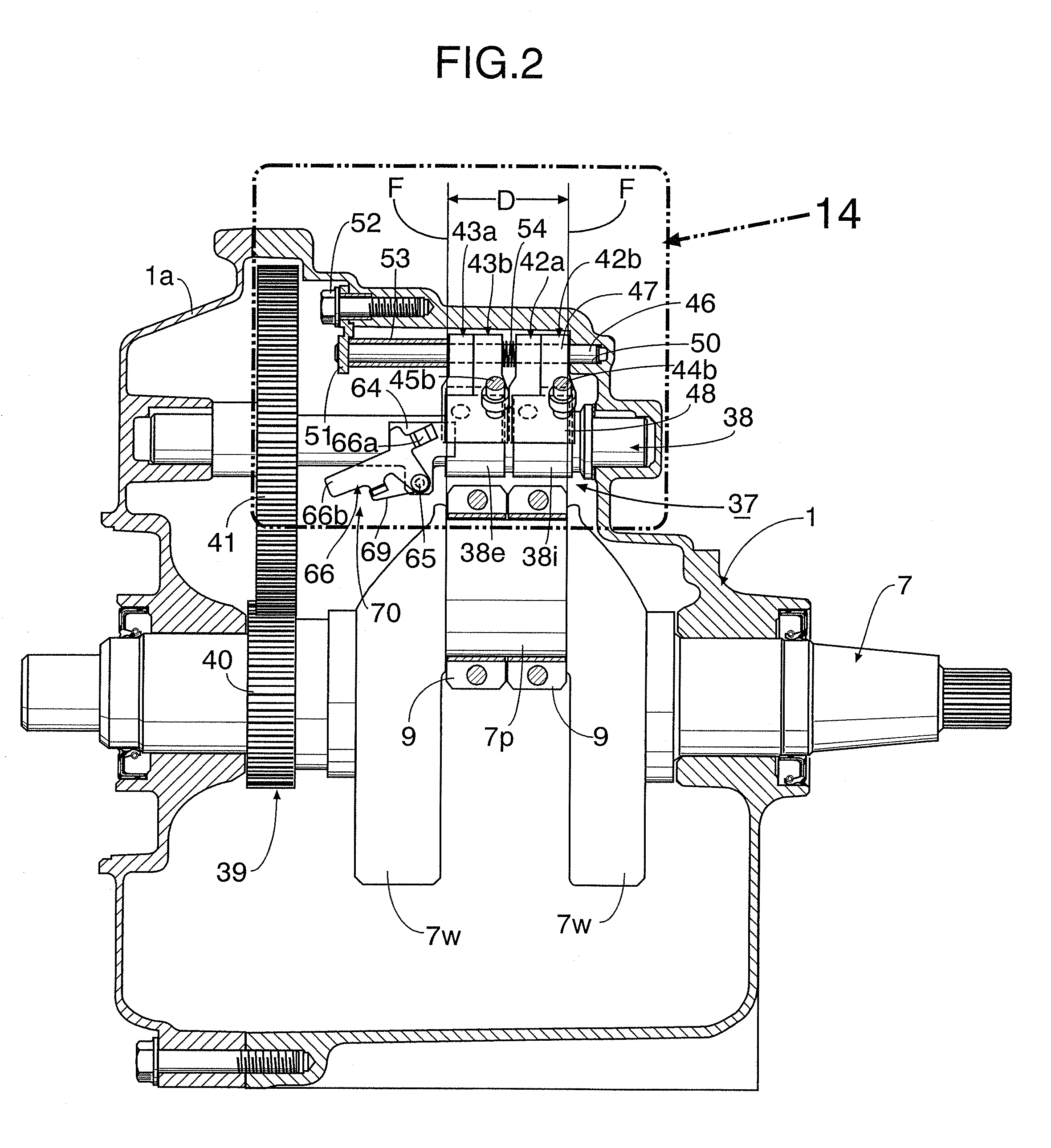V-type engine
a v-type engine and valve body technology, applied in the direction of valve drives, machines/engines, mechanical equipment, etc., can solve the problems of difficult to achieve a more compact valve-operating device, and achieve the effect of reducing the distance between the intake and exhaust push rods and improving the durability of the sliding contact portions
- Summary
- Abstract
- Description
- Claims
- Application Information
AI Technical Summary
Benefits of technology
Problems solved by technology
Method used
Image
Examples
Embodiment Construction
[0031]An embodiment of the present invention will be described below with reference to the accompanying drawings.
[0032]Firstly, as shown in FIGS. 1 to 3, the air-cooled general-purpose V-type engine includes: a crankcase 1; a first bank B1 and a second bank B2 which are arranged respectively on the left and right sides in a V-shape, and which are connected to an upper portion of the crankcase 1; an installation flange 2 formed in a bottom portion of the crankcase 1; and a starter device St provided in one side portion of the crankcase so as to be housed in a space below the first bank B1.
[0033]Each of the first and second banks B1 and B2 includes: a cylinder block 3 which has a cylinder bore 3a, and which is bolt-coupled to the crankcase 1; a cylinder head 4 which has a combustion chamber 4a leading to the cylinder bore 3a, and which is integrally connected to the cylinder block 3; and a head cover 5 bolt-coupled to an end surface of the cylinder head 4. Each of the first and second...
PUM
 Login to View More
Login to View More Abstract
Description
Claims
Application Information
 Login to View More
Login to View More - R&D
- Intellectual Property
- Life Sciences
- Materials
- Tech Scout
- Unparalleled Data Quality
- Higher Quality Content
- 60% Fewer Hallucinations
Browse by: Latest US Patents, China's latest patents, Technical Efficacy Thesaurus, Application Domain, Technology Topic, Popular Technical Reports.
© 2025 PatSnap. All rights reserved.Legal|Privacy policy|Modern Slavery Act Transparency Statement|Sitemap|About US| Contact US: help@patsnap.com



